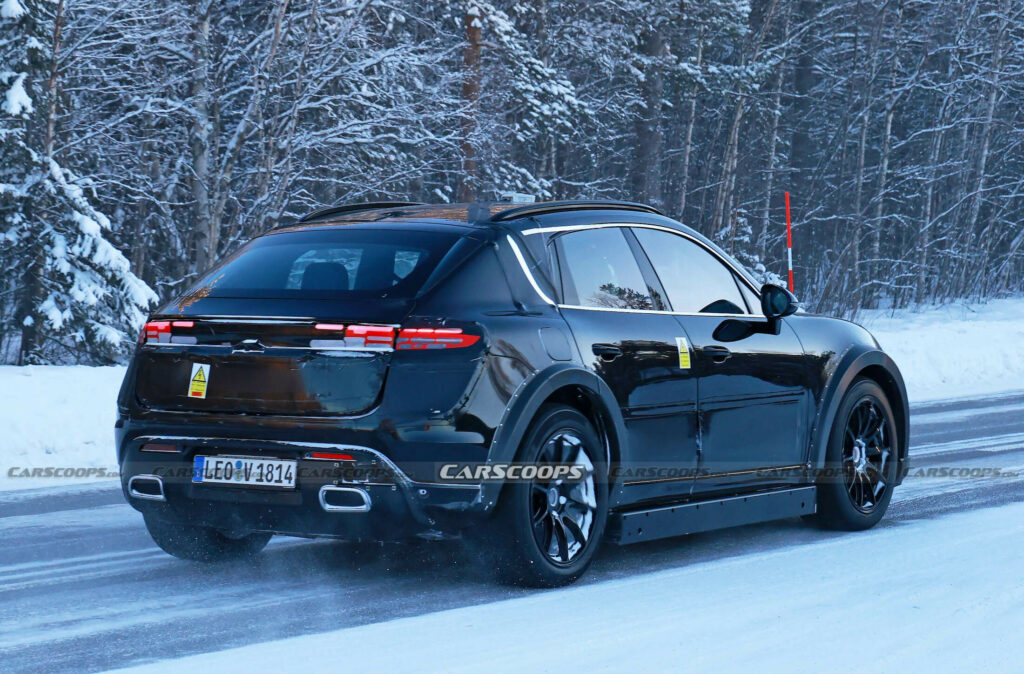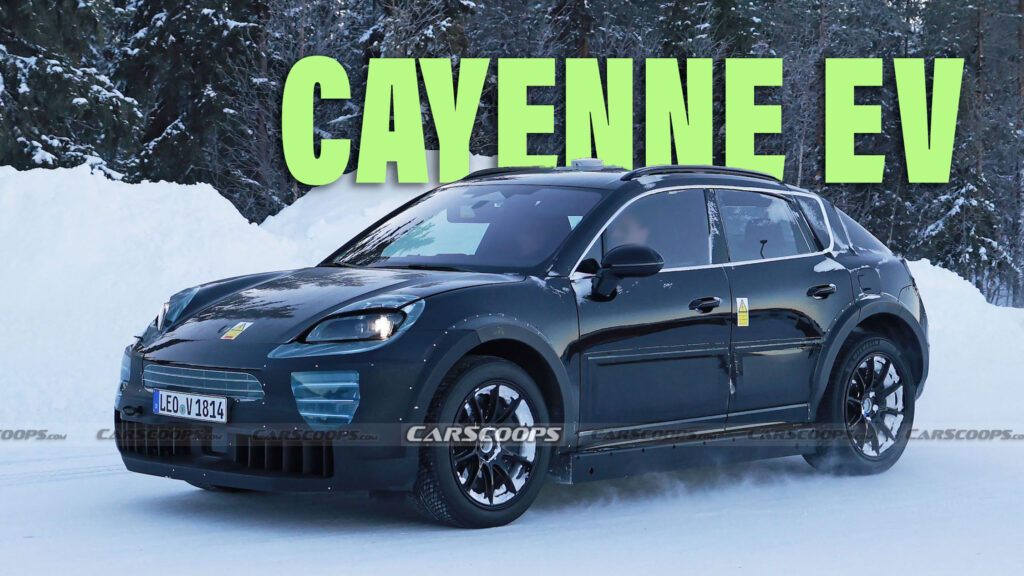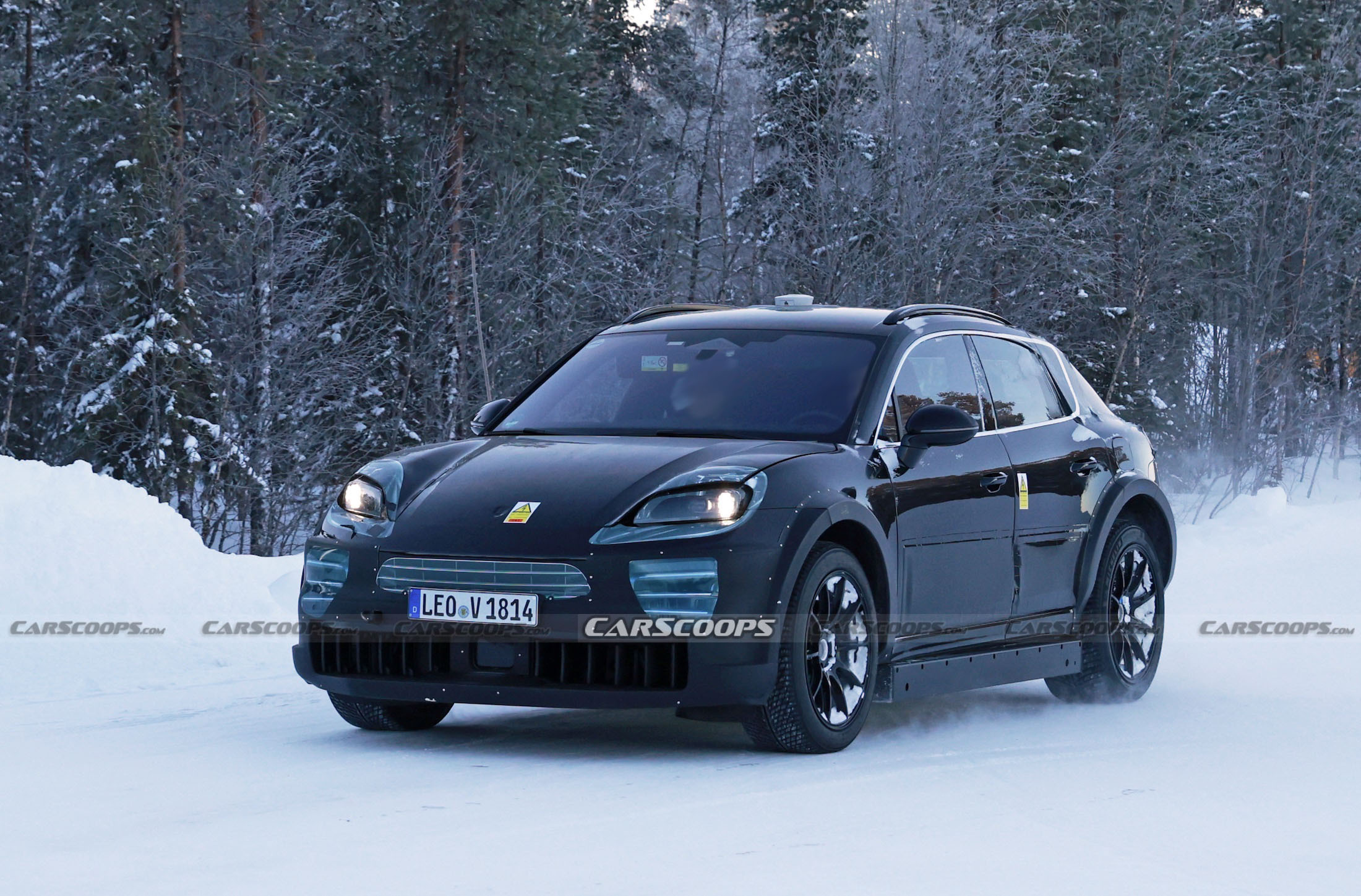After agonizing delays caused by mess-ups at VW’s crisis-hit Cariad software arm, Porsche will finally unveil the all-electric Macan this week. But there’s no rest for the wicked at Stuttgart because behind the scenes the firm’s engineers are already busy developing that EV’s big brother, the electric Cayenne.
That’s what our spy photographers have caught testing here in Sweden, though you could be mistaken for thinking it’s some monster RS version of the Macan EV. And it is a Macan in a sense, because the program is at such an early stage that Porsche doesn’t have full prototypes ready, and is instead using the smaller EV as a mule.
Like the Macan EV, the next Caynne will ride on the VW Group’s PPE electric platform and will be sold alongside the current combustion Cayenne that was recently upgraded with more power, a better chassis and a slicker interior. This mule’s huge over-fenders confirm that the Cayenne will have a much wider track than the Macan, and of course the wheelbase will be significantly longer, though we expect it to stick with only five seats even though some rivals offer space for seven.

If you’re hellbent on having a three-row Porsche you might want to wait until 2027 when the firm unveils its flagship seven-seat electric SUV – currently codenamed K1 – that will sit above the Cayenne. But if the idea of five chairs is fine, the Cayenne EV will be ready likely towards the end of next year or early 2026, possibly as a 2026MY.
More: New Porsche Macan EV Cruises Past 310 Miles, Charges To 80% In 22 Minutes
This being a mule it can’t tell us anything about the way the production car will be styled. But we expect to look subtly different from the combustion Cayenne, just as the Macan EV looks slightly different from its ICE brother by incorporating more Taycan styling cues. It will also get Porsche’s latest long-range LED headlights, and definitely won’t get this test car’s fake exhausts.
The styling isn’t all the Cayenne EV will borrow from the electric Macan. While we don’t know specifics at this early stage, we can expect to see a circa-100 kWh lithium-ion battery pack as well as a dual motor all-wheel drive system with around 603 hp (450 kW / 612 PS) and 737 lb-ft (1,000 Nm) of torque in mid-spec models. Charging should also be quick thanks to 800-volt tech.



























